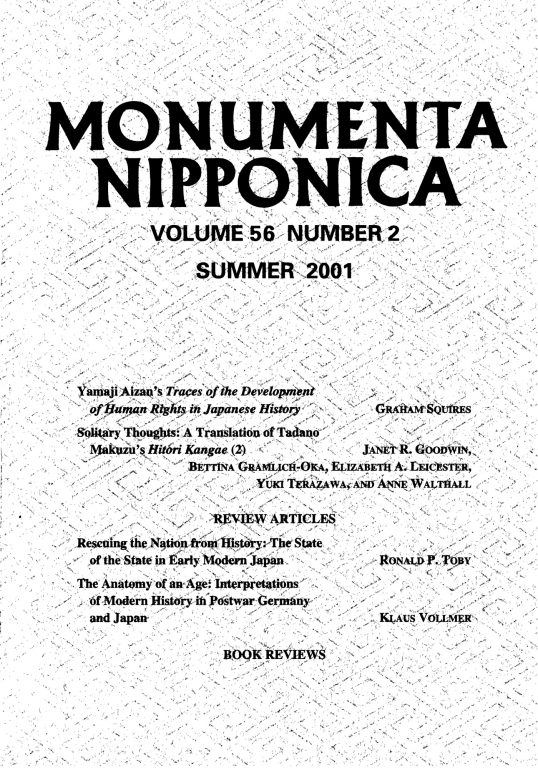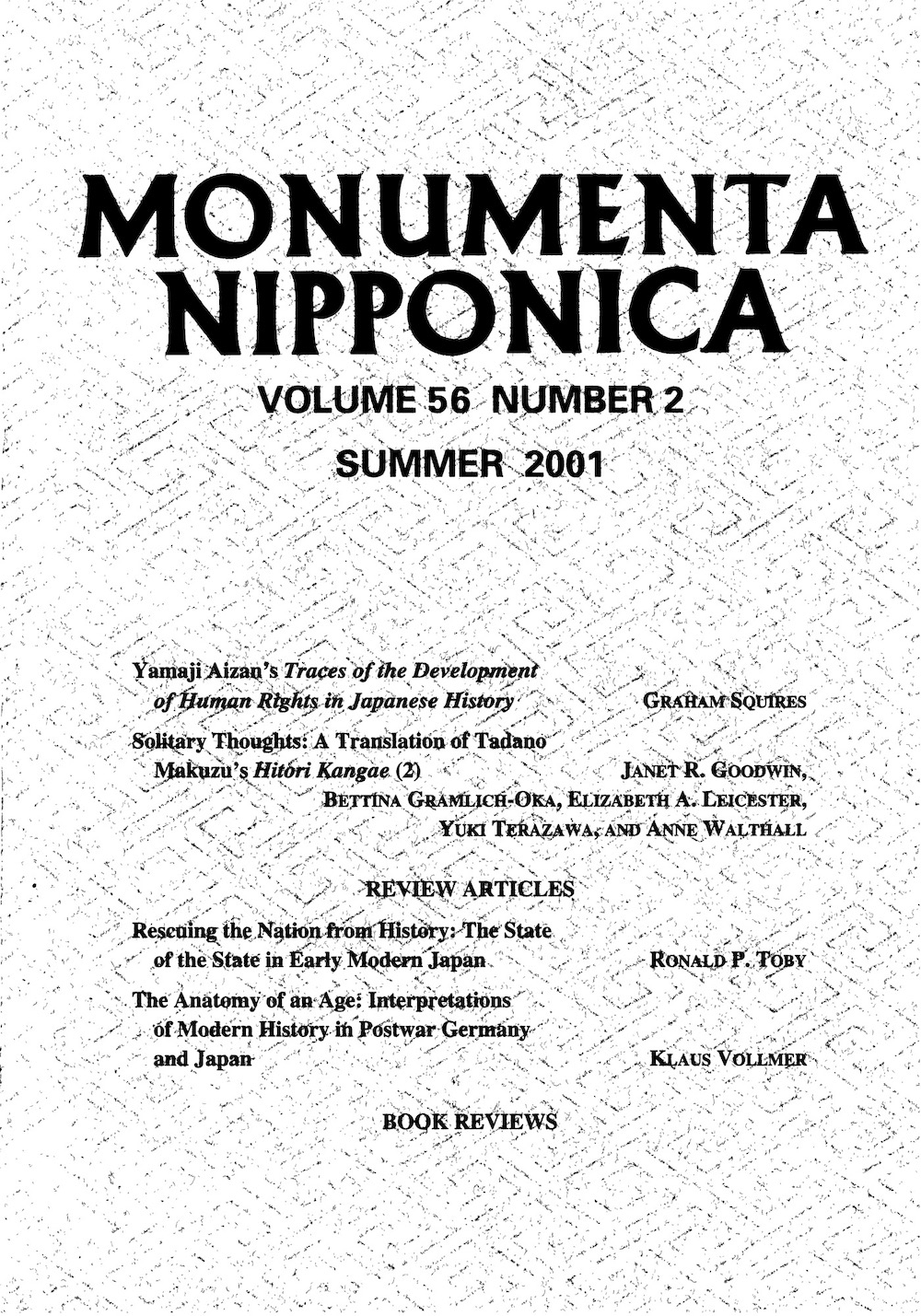Traces of the Development of Human Rights in Japanese HistoryYamaji Aizan
Translated by Graham Squires
MN 56:2 (2001) pp. 151–71
In 1881 the leaders of the Meiji government announced their intention to formulate a constitution and establish a parliament. Between that announcement and the promulgation of the constitution in 1889 and the opening of the Diet in 1890, those leaders put in place a series of measures that they hoped would maintain their own power under the new political arrangement. One was the creation in 1885 of a cabinet system in which the prime minister and other ministers were appointed directly by the emperor. The Meiji constitution did not define the relationship between the Diet and the cabinet – in fact, the term “cabinet” was not mentioned in the constitution at all. Not legally accountable to the Diet, the cabinet was in principle “transcendental,” above party politics. But while those responsible for framing the constitution envisaged the role of the Diet as being merely to offer advice to the ministers appointed by the emperor, many of those elected to the new parliament used its limited powers to challenge the government leaders. In this way, the opening of the Diet set the stage for a contest between those who believed the cabinet to be solely responsible to the emperor and those who held it should be responsible to the elected representatives of the people.

